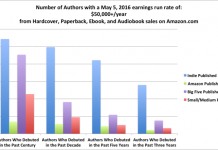 Interview with Sriram. K. Peruvemba, Chief Marketing Officer, E Ink Holdings Inc., by David Renard, Partner of mediaIDEAS.
Interview with Sriram. K. Peruvemba, Chief Marketing Officer, E Ink Holdings Inc., by David Renard, Partner of mediaIDEAS.
Other technologies existed for other purposes and then moved into reading. The creator of e-ink was on vacation and ran out of books to read and went to his students in the lab and came up with this. The ink they use is exactly the same as the ink used on regular paper. Now in third generation. About 50 different ebook devices on the market and are on about 40 of them. The owners of e-ink have LCD technology and it is the number one technology in the tablet space – Samsung Galaxy uses it. E-ink now in watches. The display is very thing so you can past it onto substrates. Want to get into a whole host of other applications. Many devices have no display at all, for example a battery pack, and can past the display onto a lot of them.
Convergence has never happened and probably won’t happen in the short term. Dedicated devices will always exist at separate devices for a long time. Convergence will happen when don’t loose functionality and this will take a while. There is still room for single purpose devices. But loves the iPad and doesn’t like reading on it for long form reading. Probably won’t change in the future because LCD not close to the paper experience.
Looking at color and a mainland China customer will come out with a color device in about a month with a 9.7 inch color screen. But color is not vivid enough compared to LCD. Will never see National Graphic on e-ink. The killer application for the technology is textbooks. Students will use a multi-purpose device for all the wrong purpose. A single purpose device will concentrate them on the textbook. Will happen in third world countries before it happens here. Greatest interest is in Brazil, India and China, not in the West. The color they have now is good enough for textbooks up to a high school level. Very important that e-ink is the low power consumption and this is preserved in the color display. Strongly believe that textbooks are perfect for e-ink. New color display will be about 15 to 20% of the cost of the device. Interest in using e-ink for maps and for blueprints. Could actually coat walls and windows with e-ink. Done a number of brochures, placed displays in trains.
In color displays still use a monochrome display with a color filter on the top and is even 50% thinner than the current black and white display. Because it’s so thin you will get a much better response when using it as a touchscreen. Newer color displays will be able to do video at decent frame rates. Now it takes 250 milliseconds to change a page on e-ink, which is actually faster than it takes to change a page in a paper book. Newer displays are 10 times faster – about 50 millisecond and will be available in about two years.
LCD devices use a glass substrate and so much more fragile. E-ink screens are made as rolls which are a kilometer long. Can make absolutely huge displays which will weigh very little. On their end the large screens are done, but the cases and electronics are up to others and this is what is holding up larger devices. Probably see a device the size of a notepad released this year. From the electronics perspective the low price is already there, but from a content standpoint there is a ways to go in terms of customer satisfaction. Thinks that this year price will drop below $100.
Rate of growth of devices using their technology actually increased after the release of the iPad. Apple is doing a lot of education for them. Sees both a co-existing. In some sense they don’t care who “wins” because they are such a leading provider of LCD displays and LCD technology.

































